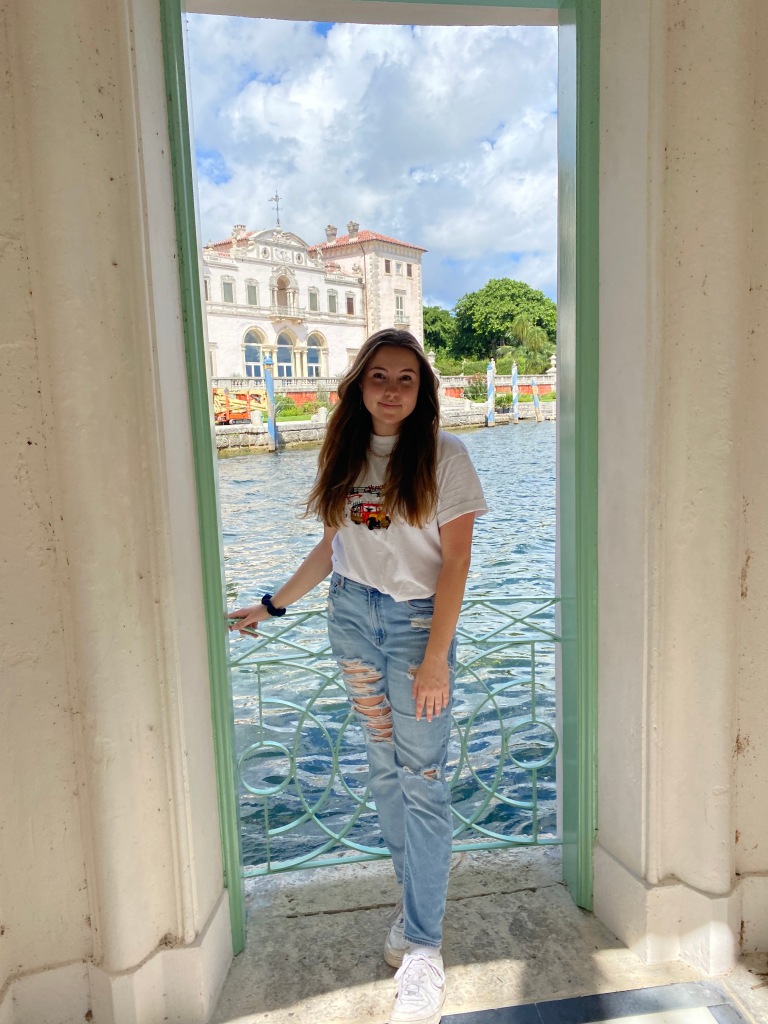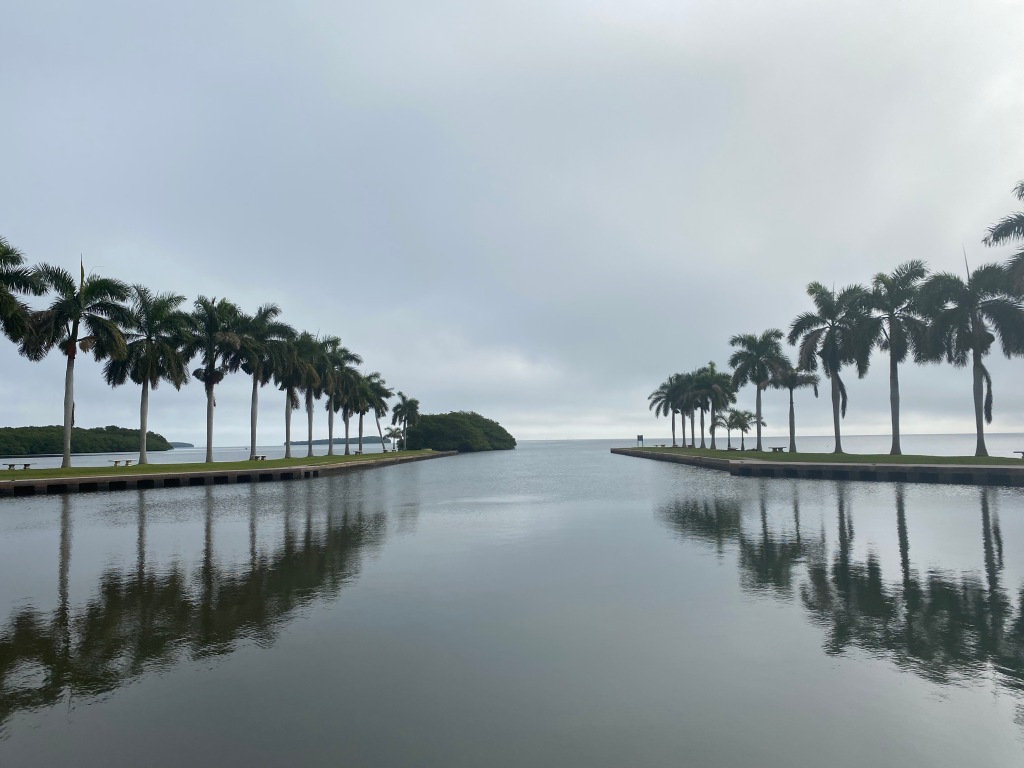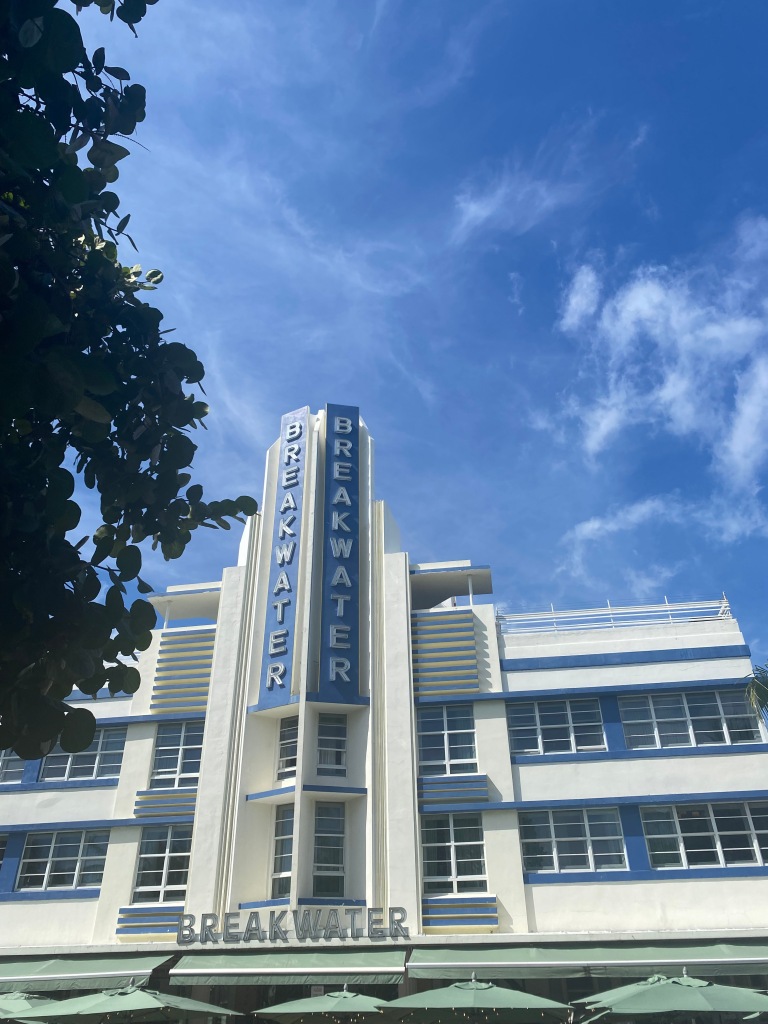
Alexandra Fiedler is a second-year student at Florida International University who is majoring in Psychology and minoring in Spanish. After moving to Miami from Albuquerque, New Mexico, Alexandra is fascinated by the cultural, historical, and geographical differences between the place she grew up and the places she is experiencing for the first time. Alexandra passionately strives to learn and help others, while expanding her knowledge about the exciting cultural phenomena not just here in Miami, but also abroad in exciting. new places like España!
Deering Estate as Text

“Inspired by”
By Alexandra Fiedler of Fiu at The Deering Estate on 28 January, 2022
The Deering Estate, or the former home of Charles Deering has both a rich and fascinating history filled with his interesting inspirations for his Estate and his advanced attitudes surrounding conservation, among much more. The class was taken back in time on the hike, learning that the very ground we were walking on had been traversed by people thousands of years ago for very different purposes than that of our educational hike. The land has long been viewed as both a necessity and something of great value, which thankfully, Charles Deering sought to protect and conserve. Luckily for us in the present times, this means that we are now able to experience the natural beauty of many rare and endangered ecosystems such as the pine rocklands, that are scattered throughout the estate.
Traveling into the home itself, the class learned that Charles Deering was heavily inspired by Spanish architecture, art, and design when creating his Miami escape. He based the design of his Stone House off of his very own home in Spain. There are even elements of Moorish architecture that can be found throughout the house, truly illustrating how deep the Spanish inspiration for his home goes. The Moorish influence in Spain dates back several hundreds of years, yet is still portrayed in many prominent features, like their unique rendition of the ‘arch.’ It was intriguing to hear about how Charles Deering spent such an extravagant amount of time and resources to perfectly design his Spanish-inspired home. It was disheartening to hear that he was the original reason that international laws now protect sacred art from being removed from their home countries against the will of the people. Although many of the religious icons once displayed in his home were valued on a deeply spiritual level, Deering insisted on having them transported across the sea so his home in Miami would fit his particular aesthetic. Despite the controversies that surround Deering, his home and estate are truly something to be marveled at, even today. Looking out over the bay at the spectacular ocean view, it is no wonder that he deemed this place to be the perfect location for his fortune. There is something so mystifyingly beautiful about the natural landscape combined with his impressively constructed estate. Even many decades later, it is still certainly a site to not only educate oneself of the rich history but also to experience the incredible scenery and views that border his home. The Deering Estate will continue to be a legacy of his vision and design throughout the ages.
Vizcaya as Text

“Europe Meets Miami”
By Alexandra Fiedler of Florida International University on 18 February, 2022
Vizcaya is a breathtaking mansion and estate located here in Miami, Florida. Constructed in the early 1900s and completed in 1916, the artistic vision behind the estate has remained consistently revered throughout the ages for its masterful execution. The house is filled with decadent pieces of art and various artistic styles, such as featuring rooms dedicated to the Rococo style. The man behind the vision of it all is Paul Chaflin, a painter and designer who studied throughout Europe before partnering with James Deering to curate the Vizcaya that is known and loved by many in the present. The estate’s grandeur is evident before one even enters the house, as one must pass through a winding street and over a moat before entering the home. Chaflin’s European inspiration is highly evident when going through the mansion, as one can see how the various rooms are inspired by styles popular in France, Spain, and Italy, among other European places. The beautiful works of art surrounded by ornate furniture and decorative pieces create a truly special atmosphere that leaves one wishing to explore more and venture further into the home.
It’s very fascinating to think about how Vizcaya has become such a clear example of European inspiration clashing with classic Miami hedonism to create a charming oasis by the sea. Both Deering and Chaflin spent extensive amounts of time in Europe, and brought a multitude of Vizcaya’s pieces directly from Europe. However, with the clear tropical infusion and notes of Miami’s pleasure-centric ideology, Vizcaya has a distinctly special charm that cannot be found anywhere else. Its beauty is timeless, and people can enjoy the many exciting facets the estate has to offer over 100 years after its initial creation. Its eccentric atmosphere invites people to gather, relax, and enjoy the true beauties of the world, all while being surrounded by a masterfully curated estate.
Downtown Miami as Text

“Where the World Ends and the City Begins”
By Alexandra Fiedler of Florida International University on March 11, 2022
Skyscrapers, neon lights, trendy shopping centers and hip city centers are all acutely representative of the Miami that exists today. But as we traversed through the concrete jungle– illegally crossing streets to avoid the seemingly endless construction, stopping under almost deafening overpasses, and maneuvering down concrete steps built through the scarce natural scenery– we came to understand that this booming metropolis is not the Miami that has always existed. Rather it is one that has been strategically created to increase idealizations of luxury and exclusivity, all while erasing the truly authentic Miami that has almost ceased to exist today. Looking out at the expansive mouth of the Miami River, we imagined how it would feel to be one of the Tequestas seeing Spanish ships approaching for the first time. We learned how although they were located in Miami first, they were quickly and forcefully removed from the pristine location as stronger and more forceful populations dominated the area. It was disheartening to learn at the Miami Circle that all other ceremonial circles had been destroyed to build yet another high rise. To me, seeing a Whole Foods on top of the remains of Tequesta society was the perfect representation of what Miami has become. The city has been increasingly commercialized, attracting rich and powerful people to the vibrant location, but at the cost of losing that unique authenticity. Miami has a fascinating yet turbulent history that is rapidly being forgotten in exchange for condominium complexes that touch the sky. People would rather enjoy the blue glass, neon lighting, and funky architecture instead of delving into the painful and honestly embarrassing history of displaced and marginalized populations. Miami did not rise out of dust–it was built on the razed lands and cultures of other peoples. Knowing this history is the first step to correcting the direction Miami is currently heading towards as it allows for honest insight and reflection into who we really want to be seen as by the rest of the world. Do we really just want to be another flashy city with exciting nightclubs by the beach? Or do we want to be recognized as a city of diverse cultures that celebrates differences across the age and exemplifies the past we came from and the future we aspire to be?
South Beach as Text

“Worth Fighting For”
By Alexandra Fiedler of Florida International University on April 1, 2022
It is often hard to imagine a time in which the Art Deco styled buildings that line Ocean Drive could be anything but the eccentric, bustling tourist destination that it is known as today. But the neighborhood has not always been viewed with such high regard, and in the 1950s the hotels had fallen into disrepair, the wealthy people that once traversed far and wide to South Beach found other places to visit on their destination vacations. The district became home to middle and lower classes, and had a large Jewish population following the second world war. The glamour and excitement that Art Deco once stirred up in people had fallen into the shadows of the newer ‘MiMo’ architectural style–Miami Modern designs. In fact, many developers sought to demolish the Art Deco district on South Beach to make way to newer, flashier condos and high rises. They may have been successful too, if it wasn’t for one dedicated woman named Barbara Baer Capitman. Barbara founded the Miami Design Preservation League (MDPL) in 1976 with designer Leonard Horowitz with the intention of saving the Art Deco District from being entirely demolished. Capitman and her associates pushed for the one-mile stretch of hotels and other buildings to be recognized as a historic place. The MDPL succeeded in 1979 when Miami’s Art Deco District was named the first 20th century urban area to be placed on the National Registry of Historic Places, meaning it would be preserved and no one would be allowed to destroy it to build something else.
However, Barbara had to struggle and really fight for what she wanted to accomplish. She was mocked and ridiculed by many wealthy and powerful people who saw her as a nuisance rather than an activist. Being in her 60s while she was fighting for South Beach, Barbara eventually had to slow down and pass the goals of the MDPL onto younger members. Even after her death, numerous colleagues acknowledged how strong of an impact Barbara had on the city of Miami with Judith Frankel, director of the MDPL even saying, “(Barbara) revived the buildings and by doing so, revived the city.” It is clear that while she disrupted the capitalistic plans of the ultra-wealthy developers Barbara touched the hearts of many more and it is only through her exceptionally hard work that we can still enjoy the truly unique Art Deco District on South Beach for the years to come.